6 WTF Military Plans Too Dumb For Movies
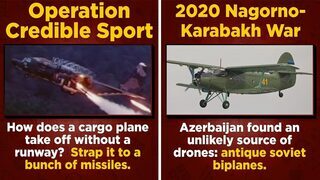
The precise planning and execution of military operations can sometimes fall into place so perfectly that the re-telling of their historical events can come off like a perfectly scripted screenplay.
These are not those stories ...
Rwanda Launched a Massive Airborne Invasion With Hijacked Airliners
Don't Miss
After the 1994 Rwandan Genocide, the cartoonishly corrupt Congolese dictator Mobutu Sese Seko decided to help some murderous Hutu shitheads with their sequel plans. This angered Rwanda, which promptly conquered the Congo in seven months ... despite being 1/89th the size of the Congo. However, the new, Rwandan-installed Congolese dictator Laurent-Desire Kabila quickly decided to tell Rwanda to screw off. This also angered Rwanda, which promptly launched a daring airborne invasion to bump him off too ... despite not having an air force.
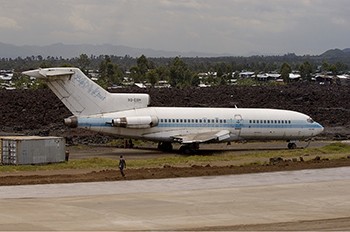
In August 1998, Rwanda's leaders had their BFFs, the Banyamulenge, stage an uprising in the Eastern Congo. Commandos led by General James Kabarebe seized two Boeing 727s and two Boeing 707s during the chaos, then they forced some random pilots they kidnapped to help start the bloodiest war since World War II.
The commandos flew to the other side of Africa, landed in the middle of enemy-held Kitona Airbase, and jumped off the rear airstairs of still-moving 727s like an army of D.B. Coopers. After stealing the airport, Kabarebe forced his stolen pilots to use his stolen airline to fly in thousands of Rwandan and Ugandan soldiers. He also used suitcases full of money to persuade thousands of dissident Congolese soldiers in the area to dissent so hard that they switched sides with all of their tanks and artillery. He quickly gathered an army of somewhere around 18,000 men. For comparison, the United States landed about 17,000 airborne troops during the Normandy Invasion.
After Rwanda essentially cheat-spawned a massive, unopposed army 1,200 miles away from Rwanda itself, it captured (and raped and pillaged) Congo's coastline, oil fields, and main hydroelectric dam. If you ignore the widespread atrocities both sides were now committing (like most of the world did), there weren't any problems ... Until Rwanda's old allies, Angola, Zimbabwe, and Namibia, unexpectedly decided they were fed up with Rwanda's bullshit and switched sides. Angola counter-invaded and recaptured (and re-raped and re-pillaged) the area Kabarebe had taken mere days earlier. Zimbabwe just barely stopped Rwanda from taking the Congo capital at the completely absurd Battle of N'Djili Airport, where Zimbabwean fighter jets had to bomb the other end of the same runway they were taking off from. Namibia's army eventually showed up and got a participation trophy.
Cut off and surrounded by multiple armies, Kabarebe activated his plot armor and teamed up with UNITA to surprise-counter-counter-invade Angola, where his army essentially built their own airport in the jungle and flew away on notorious arms trafficker Viktor Bout's private air force in the middle of the night.
"Operation Kitona" triggered the Second Congo War, AKA "The Great War of Africa," AKA "Africa's World War." Whatever you call it, this massive regional war directly involved a whopping 34 countries and armed groups and killed over 5 million people. It mostly ended in mostly stalemate in 2003, but some fighting continues to this day.
Azerbaijan Spammed Armenia's Air Defenses With Antique Biplanes (In the year 2020)
If you were distracted by another news event between September 27th and November 10th, 2020, you likely missed the war between Armenia and Azerbaijan. Their beef was over Nagorno-Karabakh, a disputed mountain region that has historically been owned by whoever last ethnically cleansed it. Their first war over the area ended with the Soviets invading and annexing both countries, sooo that was a bit of a mulligan. Still, Armenia won the next war, which caused Azerbaijan to get really salty and start this war by invading Nagorno-Karabakh with Syrian mercenaries. Hey, third time's the charm.
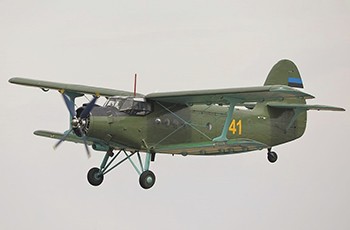
That's a picture of an Antonov An-2, a Soviet biplane first built in 1946 and commonly used as a crop duster, but Azerbaijan rigged up a bunch of these as makeshift bomber-drones. As you might remember from the entire article we actually once wrote about Nagorno-Karabakh, Armenian soldiers were stationed in WWI-style trenches, which became rather ironic when biplanes attacked them. However, Azerbaijan's main objective wasn't to bomb the Armenians per se; it was to spam the Armenians with shitty crop dusters they'd inevitably shoot down, which would give away the positions of their air defenses.
Azerbaijan would then dispatch a fleet of ultramodern drones it had bought from Israel and Turkey to wipe out the Armenian air defenses. We managed to obtain the raw, graphic drone footage of this happening thanks to our daring journalism skills and because Azerbaijan's Ministry of Defense posted it on YouTube, bragged about it on Twitter, and played it on electronic billboards in their capital city.
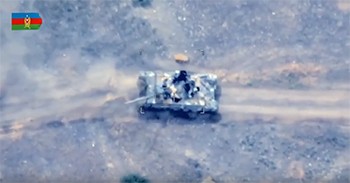
Azerbaijan & friends rolled up the Armenians pretty hard, and Vladimir Putin ultimately brokered a ceasefire. The Azeri president announced the victory on Twitter, while the Armenian Prime Minister announced his country's defeat in a Facebook post, and then an angry mob stormed the parliament looking for him. The new Armenia-Azerbaijan border resembles a series of gerrymandered congressional districts patched together with international roads, which totally won't cause any future conflict because several thousand kind Russian soldiers have moved into the region to provide peace, stability, and, according to this map, most of the colors of the rainbow.
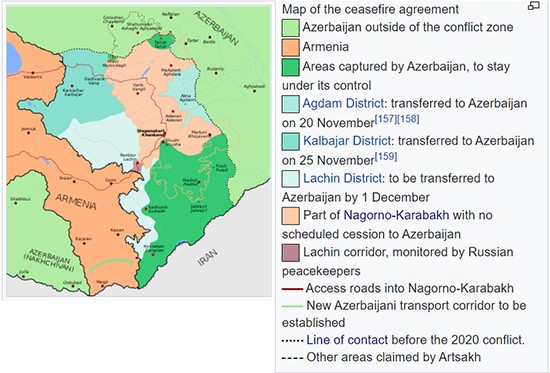
A German Battlecruiser Got Sunk Four Times (Twice Due to an Eccentric Scrap Metal Merchant)
In the early 1900s, some British guy had a terrible idea: Let's build ships with the "FU" firepower of a dreadnaught battleship, but with so little armor they might blow up if the enemy kicked it hard enough, and also give them a stupid poser name like "battlecruiser." The Germans copied these deathtraps, and that's how SMS Seydlitz happened.
Early in the war, Seydlitz went out on patrol when, oh snap, it got shelled by some British ships that managed to hit and explode Seydlitz's own ammunition. Whereas British battlecruisers tended to explode spectacularly and literally kill over 99% of their own crew when this exact same thing happened to them, Seydlitz sailed away and got fixed. Then it hit a mine, which was kinda neato, and got fixed again, just in time for the Battle of Jutland.
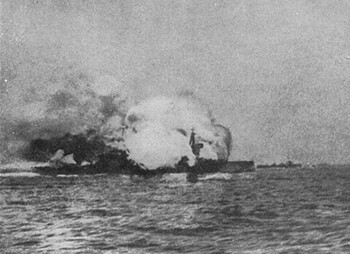
That was the naval battle where the Germans and British finally got all of their totally dope boom boats together for one great big North Sea Murder Spectacular. In true WWI fashion, thousands of people died, and nothing changed, so both sides claimed victory. The Seydlitz itself was torpedoed and hit by 21 heavy shells in this battle, but in an epic sequence of events that could be its own article, it basically snuck past the entire British Grand Fleet while sinking, listing, on fire, and sailing backward. Pump steamers and tugboats just barely nudged Seydlitz into port, and it more-or-less sank at the dock, but the water was so shallow this didn't really matter. The Germans simply fixed the ship yet again.
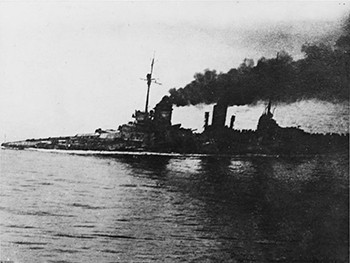
In November 1918, a completely screwed Germany figured it might as well just order its entire navy to go on a hopeless Hail Mary suicide attack. So, the completely screwed German sailors tasked with carrying out this order figured they might as well just mutiny and overthrow the government ... which they promptly did. After some revolution-ing and an armistice, Germany's navy wound up interned in Britain's main naval base, Scapa Flow. Allied haggling over who got which ships was sidestepped by the entire goddamn German fleet -- Seydlitz included -- sinking itself out of spite.
The British were actually pretty stoked about this because they wanted to sink the ships anyway, but they were still annoyed that Germany's entire navy was now clogging their big important naval base. Scrap metal merchant Ernest Cox bought the salvage rights to some of these ships and got to work. Cox raised the Seydlitz sideways (a first), but then it sank yet again in a more difficult position and wrecked a ton of really valuable equipment. This pissed off Cox. He got so obsessed with Seydlitz that when his employees accidentally raised the ship early, Cox ordered them to sink it again just so he could have it re-re-raised in front of the press. After being un-un-un-un-un-un-un-unsunk, Seydlitz was finally towed to a scrapyard. Upside-down.

One of the Deadliest D-Day Beaches was The Practice Beach in England
A few weeks before D-Day, Dwight D. Eisenhower ordered "Exercise Tiger," a full-scale practice landing for Utah Beach. It would be just like the real invasion, except on a random British beach that didn't have any Nazis near it.
The first problem was that the Nazis showed up, which was quite rude as they hadn't been invited. Nine German torpedo boats found out about the exercise and managed to slip into the practice invasion fleet during the night and sink several landing ships, killing over 700 Americans. So that's, like, 2.5 gulf wars right off the bat, and they hadn't even started the actual fake landings.
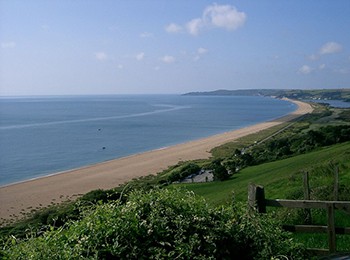
Now, Eisenhower wanted the landings to be as realistic as possible. This meant full battle loadout, live ammunition, naval bombardments, and - most realistically of all - hundreds of men needlessly dying in a random bureaucratic screwup. Some of the landing craft were running late, so the landings got delayed by an hour. Some of the assault boats didn't get this memo, while most of the Navy did. As a result, a bunch of guys went in at the original time and were massacred by the practice naval bombardment.
Of course, Exercise Tiger was quickly covered up and forgotten about, and all the survivors threatened with court-martial if they ever told anyone about it. Communication failures were fixed, strategies improved, and an aggressive air-sea campaign against German torpedo boats waged. The exact death toll is a bit fuzzy because of the cover-up, but it was somewhere between 700-ish and 946. Ironically, this meant Exercise Tiger killed more men than the actual landings on Utah Beach. Depending on how exactly you count the numbers, it arguably killed more men than any D-Day beach except Omaha as well.
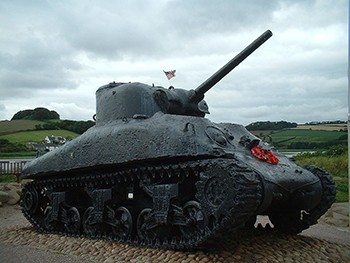
The US Built a C-130 Cargo Plane That Could Land in a Football Stadium (Using Dozens of Rockets and Missiles)
When Iran took a bunch of American diplomats hostage, America's answer was to have some of the hostages pretend to be a Canadian film crew, which you probably already knew. America's slightly less famous second answer was Operation Eagle Claw, a convoluted rescue mission where part one had Delta Force land a bunch of helicopters and airplanes on an Iranian highway in the middle of the desert, hang out for the night, and hope no Iranians noticed. They wound up detaining the 40-something Iranian bus riders who noticed them and then caused a massive fireball by blowing up a random fuel truck with a rocket launcher. Then the driver of that fuel truck hopped into a passing pick-up truck, which Delta Force tried and failed to chase down with a motorcycle, like some sort of life-and-death Looney Tunes cartoon. Then some of the helicopters broke down, and -- for good measure -- one of the working helicopters flew into an airplane after the mission had already been aborted.
Clearly, that live-action Team America: World Police prequel left room for improvement. First off, Operation Eagle Claw had too many steps. America's answer #3, Operation Credible Sport, aimed to skip most of those pesky steps and "simplify" the whole operation by ... uh ... attaching dozens of rocket motors, anti-submarine missiles, and anti-radar missiles to a giant C-130 cargo plane they would redesignate "YMC-130". The idea was to make a giant, one-use, makeshift almost-helicopter that could land and take-off inside the football stadium across the street from the embassy. Yes, there is a video.
Freedom has arrived, bay-bee.
After escaping Iranian airspace, the YMC-130 would land at a friendly airbase. No, wait, we misread that. It would land on a goddamn aircraft carrier. Now, that might sound insane because it is, but this was actually something the U.S. Navy had already tested. It was totally possible but really impractical as an everyday thing.
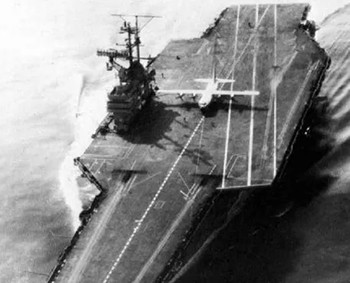
A YMC-130 was built and tested, but it crashed a few days before the 1980 Election because, as it turns out, it's really difficult to see anything when your windshield is covered in explosions. The plane's crew survived, but not Jimmy Carter('s re-election chances). America's answer #4, of course, was to build a new YMC-130. It was almost finished when the Algerian Government brokered a lame diplomatic solution where Iran simply released the hostages, which was somehow better than the idea that sounded like a GTA V mission that got cut for being too awesome.
The Russians Mistook a Bunch of British Fishing Boats off the British Coast for Japanese Torpedo Boats
Around the turn of the 20th century, Japan and Russia got into a dispute over who would get to push around China and Korea. The diplomatic option failed because Russia mistook Japan for some random punk-ass country it could send silly offers to. Hostilities erupted in 1904 when Japan launched a surprise attack on Russia's Pacific Fleet without declaring war first, a total dick move that would never work on anyone else ever again.

The Russians needed to send a replacement fleet from Europe, but Japan had just killed or besieged all of their competent sailors, so they really had to scrape the bottom of the barrel for new sailors. As it turns out, haphazardly cramming a bunch of poorly trained, illiterate Russian peasants into metal ships for seven months, giving them giant death cannons, and forcing them to eat terrible food, and promise not to talk about Communism was a bad idea. The breathtaking shitshow that ensued could support several articles, a movie trilogy, and a few sitcom spin-offs, so we'll just focus on the imaginary Japanese torpedo boats.
Now, it was reasonable for the Russian sailors to be concerned in general about torpedo boats because those sneaky suckers could pop out of nowhere and sink a battleship. However, the Russian Navy's accuracy would be appalling even to legally blind stormtroopers, so it's not like they could hit one if they tried - and they did. Shortly after leaving their port in modern-day Latvia, the Russian ships started ramming each other and running aground (obviously), but the entire fleet also opened fire on a single Russian fishing boat they thought was a Japanese torpedo boat. It ignored their broadsides and sailed right up to the Russian flagship, completely unharmed, to deliver the Admiral's promotion from Tsar Nicholas II.
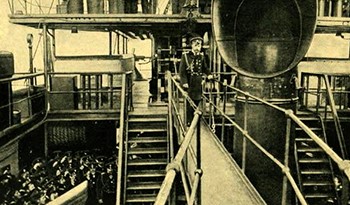
The Russians eventually exited the Baltic Sea stage left and mistook a Swedish ship for a Japanese torpedo boat. Then, 60 miles off the British coast (and 20,000 miles off the Japanese coast), they found a fleet of British trawlers. In a mind-numbingly incomprehensible screwup, these British fishing boats were mistaken for Japanese torpedo boats disguised as British fighting boats, and seven massive Russian battleships charged in to massacre the British fishermen, firing everything they had at them non-stop for 20 minutes. Then the dumbass Russian ships started shelling each other for some reason, which was -- and this is not a joke -- the third time that week, they had attacked the wrong country.
When the dust cleared, the mighty Imperial Russian Navy had almost managed to fight these unarmed neutral fishing boats to a draw. Several Russians died, and two cruisers were damaged, while exactly one British boat sank, killing two fishermen. Yes, one fishing boat. Russian naval gunfire was so inaccurate that the battleship Oryol alone reportedly managed to fire over 500 shells without hitting anything, even though the trawlers were completely stationary (they had their nets down and couldn't move). The Russians tried to pretend this didn't just happen and simply sailed away without helping the survivors, but then one of their ships got separated for a few days and fired over 300 shells at French, German, and Swedish ships, missing every shot.
The British had the Royal Navy shadow the 2nd Pacific Squadron while Parliament debated if they should turn the Russian sailors into meat confetti. They decided not to after Russia agreed to fire some extremely lucky officers. The Second Pacific Squadron eventually managed to reach the warzone, whereupon it got immediately deleted at the Battle of Tsushima Strait. That pretty much ended the war, and -- fun fact -- Teddy Roosevelt won the 1906 Nobel Peace Prize for negotiating the peace treaty.
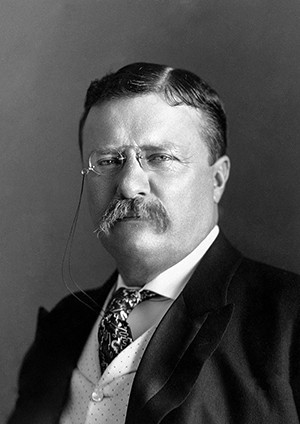
Top image: U.S. Navy, Wikimedia Commons